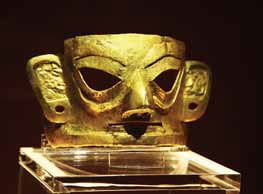Jinsha, Sanxingdui ruins open up gateway to past

Visiting both of the ruins of Jinsha and Sanxingdui is an exploration of one of the most interesting ancient cultures in China.
Jinsha rose to prominence around 1,000 BC and shares similar origins with Sanxingdui, which can be seen in the types of burial objects at the two sites, historians said, although Jinsha had no city wall.
The comprehensive display at the archaeological site uses modern technology to recreate the kingdom and its fascinating culture.
Built some 5,000 years ago, the ruins of Sanxingdui, about 50 kilometers away from Jinsha, are a gateway into a mysterious civilization that once flourished in southern China.
The ancient culture that built these structures was a strong centralized theocracy that traded in bronze and ivory.
Evidence of distinctive independent cultures in different regions of China defies the traditional theory that the Yellow River was the sole "cradle of Chinese civilization".
Excavations of Sanxingdui have turned up the ruins of a city that was the political, economic and cultural center for the State of Shu (1046-316BC).
The Qin Dynasty (221-206BC) annihilated the state in 316 BC. Little was known about Shu culture until the 2001 discovery of the Settlement of Jinsha, one of China's top 10 of archaeological finds.

